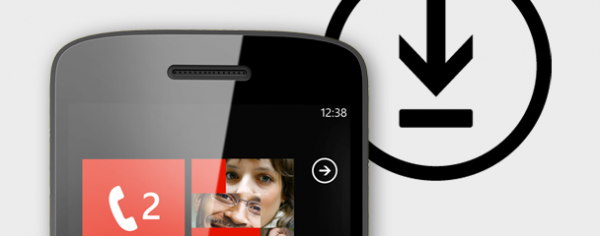Windows Phone reaches for the bottom

Sometimes, BetaNews readers really amaze me. Three days ago I posted "The measure of Windows Phone failure is..." based on comScore US smartphone OS market share data. To me, it was a trivial story, because I was days late writing about the numbers and posted it more as filler, being short writers (because of holidays and emergencies). More than 220 comments later, Windows Phone is hot-topic of debate among you.
Yesterday, Gartner released first-quarter global phone sales data that puts to end any real debate about Windows Phone's present: Combined smartphone OS share with Windows Mobile was 1.9 percent, down from 2.6 a year earlier but flat sequentially. The quarter-on-quarter data suggests, in context of Nokia Lumia launches, that Microsoft's mobile operating systems have finally hit bottom -- that perhaps the things won't get much worse and could finally improve.
Glimmer of Hope
Day after I posted the, ah, "failure" story, Kantar Worldpanel ComTech released data downright hopeful for Windows Phone. During the first three months of the year, market share rose to between 3 percent and 4 percent in Britain, France, Italy and the United States and to 6 percent in Germany. That's up from about 2 percent in nine countries, sequentially. Problem: Kantar Wordpanel doesn't exactly measure sales, but uses consistent panels of users to calculate market share. The approach is still much more accurate than shipments, which is the measure most analyst firms use.
Today, I asked Gartner for clarification on Microsoft share: Is it Windows Phone only or combined with Windows Mobile? "Windows Phone makes up around 85 percent of the overall Microsoft numbers you see", Carolina Milanesi, research vice president, says. She adds: "With Nokia accounting for around 60 percent".
What about Windows Phone's future? She wouldn't be specific, but says: "We will see a lift from Nokia, coming from the products being available in China from April and then later in the year with the new version of the OS and new products at different price points".
America and China
China is linchpin, because of the market's size, smartphone sales delayed from Chinese New Year and Nokia's already large presence in the country. All work to Windows Phone's benefit. But the second reason is unexpected opportunity. Sales for all manufacturers fell year over year and sequentially, and China is one reason.
"Global sales of mobile devices declined more than expected due to a slowdown in demand from the Asia/Pacific region", Anshul Gupta, Gartner principal research analyst, says. "The first quarter, traditionally the strongest quarter for Asia, which is driven by Chinese New Year, saw a lack of new product launches from leading manufacturers, and users delayed upgrades in the hope of better smartphone deals arriving later in the year".
Those delays could be good for Windows Phone, as Nokia ships Lumias in volume to China and a well-regarded brand seeks revival. Meanwhile, Lumia 900 is now available in the United States, backed by big marketing campaigns.
Gartner's sales data won't reflect the smartphone in the United States, since AT&T didn't start selling Lumia 900 until April. However, shipments should show up in first quarter data from other analyst firms -- reflecting stock shipped for store shelves. Side note: Numerous commenters faulted my referring to Lumia March sales in an earlier post; that was deliberate since reported data was for shipments (and preorders started in first quarter). However, I should have made that point clearer, which is reason for clarifying now. For Windows Phone's future, second quarter will reveal more, particularly in the countries where, according to Kantar Worldpanel, share rose in Q1.
Is There Room for Three?
The larger question about Windows Phone: Can it be No. 3? Analyst Mike Feibus thinks so, writing for BetaNews: "Windows Phone will gain serious market share this year". He believes that Verizon supporting Windows Phone will hugely impact sales. I'm skeptical.
Gartner's phone sales data suggests otherwise. Apple and Samsung accounted for 49.3 percent of smartphone sales during Q1, sign that the market is consolidating around them. While Samsung sells home-grown Bada and Windows Phone devices the majority are Android. In fact, Samsung accounts for 40 percent of all Android sales. Conceptually, that should allow room for a third major operating system, but the market is heading elsewhere, as more Asian manufacturers adopt Android. More likely scenario at this juncture: Samsung accounting for most Android sales and the rest splitting among smaller manufacturers, particularly from Asia, leading to fragmentation for most of the remaining market not consumed by Apple and Samsung.
Nokia still stands in the way of that scenario, and much depends on its continued smartphone and Windows Phone transition. However, Nokia market share slumped from 25.1 percent year over year to 19.8 percent in the broader handset market, or a 22.7 percent decline. Meanwhile, smartphones languish.
"Smartphone sales are becoming of paramount importance at a worldwide level", Gupta says "Smartphone volumes contributed to approximately 43.9 percent of overall sales for Samsung as opposed to 16 percent for Nokia".
Remember, Nokia accounted 60 percent of Windows Phone sales during first quarter.
It's hard to imagine that Windows Phone can go anywhere but up. How far is the question.
